Search
Did you mean: Phaistos Disk?
Remove Ads
Advertisement
Summary 
Loading AI-generated summary based on World History Encyclopedia articles ...
Search Results
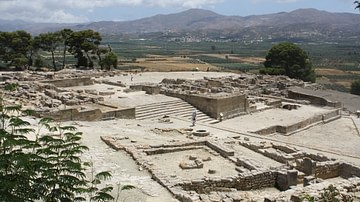
Definition
Phaistos
Located on the fertile Mesara plain in central Crete, Phaistos has been inhabited since the Final Neolithic period (c. 3600-3000 BCE). The settlements greatest period of influence was from the 20th to 15th century BCE, during which time it...
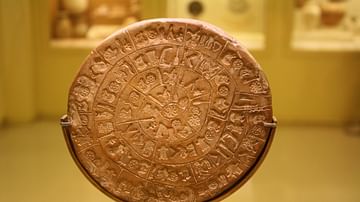
Definition
Phaistos Disk
The Phaistos disk is a fired clay disk, probably of Minoan origin, measuring some 16cm in diameter and impressed on both sides with 242 symbols set in a spiral arrangement. As yet, this unique archaeological find remains an undeciphered enigma...
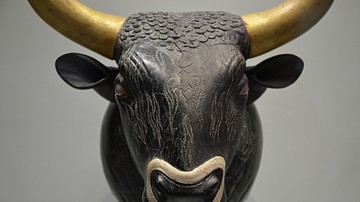
Article
Exploring Western Crete's Archaeological Treasures
As the cradle of European civilization and a meeting place of diverse cultures, Crete is a magical island that stands apart in the heart of the Mediterranean sea. Its prominent place in world history dates back to the mysterious and fascinating...
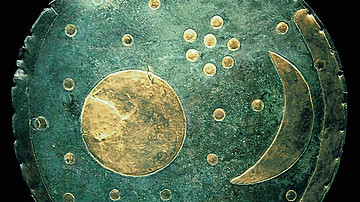
Image
Nebra Sky Disc
A photo of the Nebra Sky Disc, a Bronze Age artifact (c. 1600 BCE) found in Nebra, Germany.

Image
Phaistos Disk
One side (A) of the Phaistos disk, New-Palace period (1600-1450 BCE), Heraklion Archaeological Museum, Crete,
Each side of the clay disk is impressed with hieroglyphic symbols as yet undeciphered.

Image
Phaistos Panorama, Crete
The Minoan settlement of Phaistos archaeological site, Crete (2000-1400 BCE).
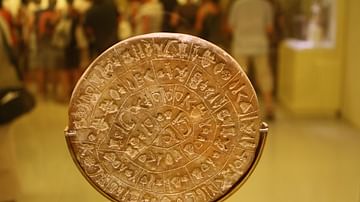
Image
Phaistos Disk (Side B)
One side (B) of the Phaistos Disk, New-Palace period (1600-1450 BCE). Heraklion Archaeological Museum, Crete,
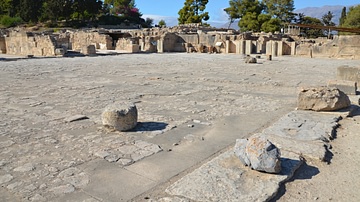
Image
Central Courtyard, Phaistos, Crete
The Central Courtyard and East Apartments of the Minoan Palace of Phaistos, Crete (2000-1400 BCE).
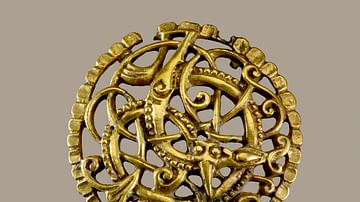
Image
Urnes Style Disc Brooch
Dished gilt copper-alloy disc brooch, Urnes style, from Pitney, Somerset, c. 11th century. The British Museum, London. Within a scalloped border, the convex surface of the circular brooch bears an openwork design of a coiled, ribbon animal...
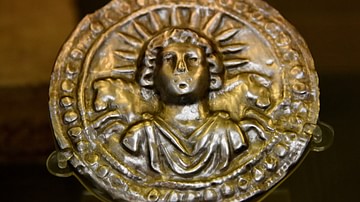
Image
Disc Dedicated to the Sun-God Sol
Silver leaf disc dedicated to the sun god Sol. Sol is crowned with rays. Two horses appear behind his shoulders. From Pessinus (Bala-Hissar, Asia Minor), in modern-day Turkey. Roman period, 3rd century CE.
The British Museum, London.